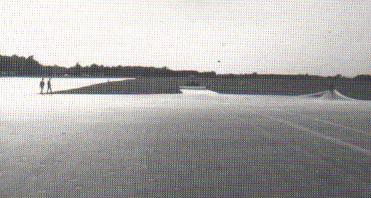A Closer Look

Always use a rug boom or similar apparatus (long pipe) when handling and/or moving a roll of Turfnit netting in order to support the entire length of the roll.
Use a tractor with a three-point hitch. Attach a handling device. It is important that the handling device is shimmed in the roll so that netting and pipe turn together at all times when installing Turfnit in the field. Leave cardboard ends on the roll during installation. It is suggested that you have round metal disks (21" in diameter) placed on both ends of handling device to keep netting from sloughing off the roll of Turfnit.
Stake the perimeter of any sod field to be covered with Turfnit netting at approximately 3' to 4' intervals. When planning to lay out the sod field, keep in mind that the 14' wide roll of Turfnit can be stretched in width from 110' to 170', depending on the field size. If running a parallel piece of Turfnit netting, it is suggested that you stagger 2 rows of stakes at 3' to 4' intervals, 1' off the center line.
After seeding, run the tractor with Turfnit netting down the center of the area to be covered. It is important to get net layer approximately 200' in front of where the Turfnit netting is being stretched in width. After rolling out this amount of netting, elevate the roll off the ground and spin off some additional netting. Remember, you lose length to get width. Then stretch the Turfnit netting to both sides, always working toward the tractor, placing edges over stakes. You are trying to stretch the fabric to the point of ripping. This gives maximum yield per roll. Repeat this procedure for the entire length of your field site.
| Field Width | Running Length of Turfnit |
| 160' | 2314' |
| 150' | 2468' |
